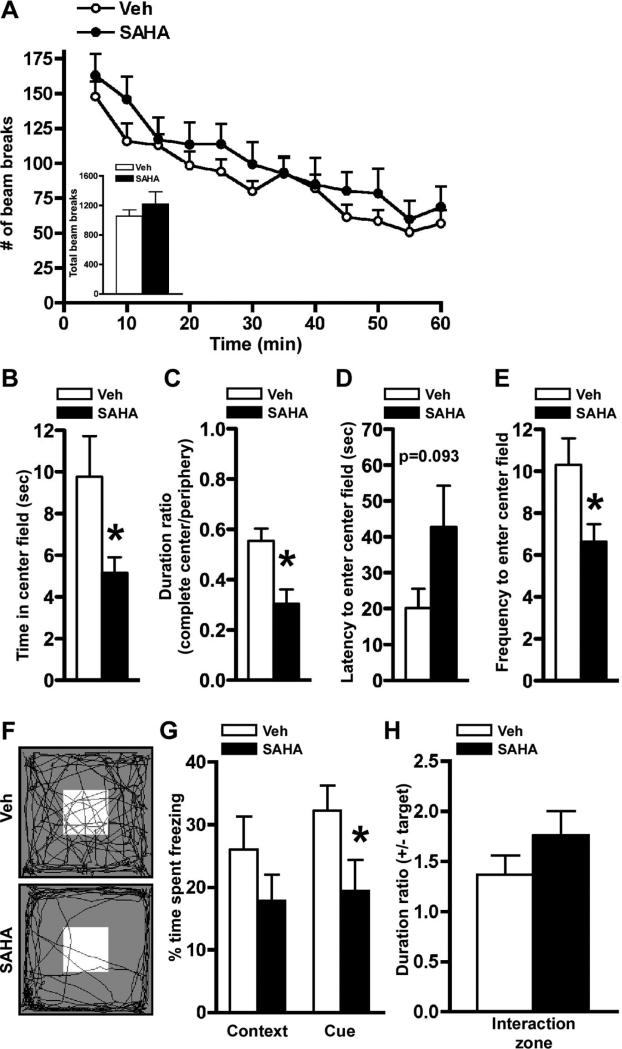Figure 6.
Mice chronically infused with SAHA in the BLA display behavioral phenotypes similar to the mice with BLA-specific deletion of Mecp2. A, Locomotor activity was unaltered by chronic SAHA infusions as assessed by consecutive horizontal beam breaks over a 60 min testing period when analyzed in 5 min increments or total beam breaks during the test period (inset). B–E, Chronic SAHA infusion resulted in increased anxiety-related behavior in the open-field test. Presented are time in center field (E), duration ratio of time spent in complete center field to that to periphery (F ), latency to enter to center field (G), and frequency to enter center field (H ). F, Representative video tracking data from the open-field test. A white box in the arena indicates the center field. G, In the fear-conditioning test, there was significantly less freezing in cue-dependent, but not contextual, memory formation from the mice infused with SAHA compared with those infused with vehicle (Veh). H, Chronic SAHA infusions in the BLA did not alter social interaction as assessed by the ratio of time spent in the interaction zone with the target to the time without the target. *p < 0.05 by Student's t test; Veh, n = 10; SAHA, n = 10 for A–H.

